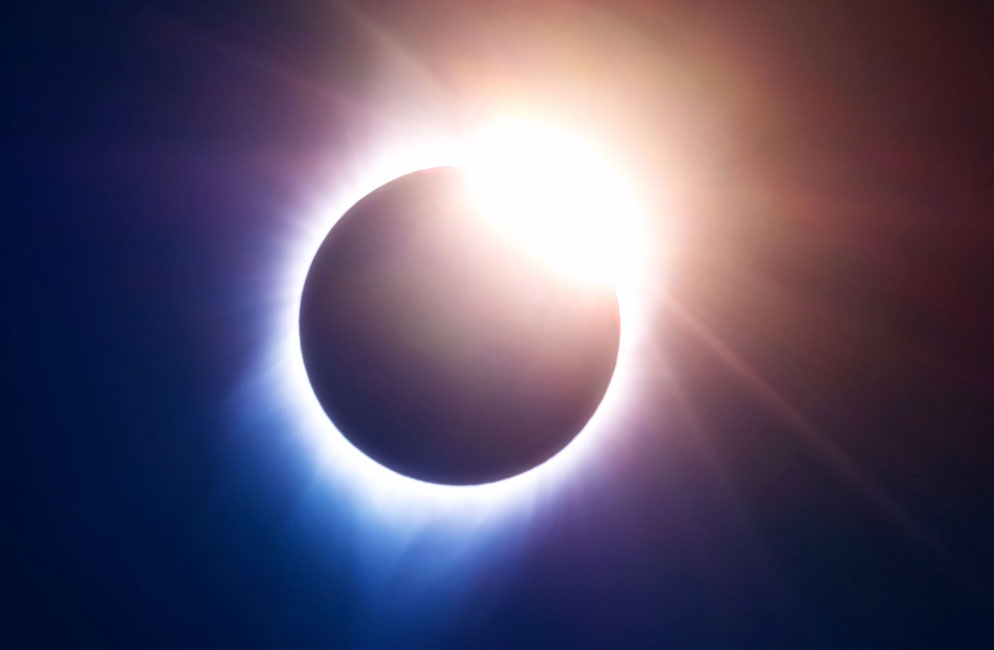Gear Options To Photograph the April 2024 Total Solar Eclipse
Solar Eclipse Photography - Recommended gear options for photographing a total solar eclipse.
Nikon Ambassador and extreme nature and landscape photographer Mike Mezeul II has no lack of experience photographing celestial events and solar eclipses are one of his passions. The upcoming April 8, 2024 total solar eclipse is special for a few reasons. First, it will traverse the continental US as well as some parts of Mexico and Canada and the next time we can expect a total solar eclipse’s path to travel across the USA will be Aug. 23, 2044.
If you find yourself in the path of totality—whether it’s because you’re planning to travel to a location specifically to photograph or view the total solar eclipse—or because you’re fortunate enough to live along the path the total eclipse will traverse, you’ll want to make sure you’ve got the gear that will let you create stunning imagery. We asked Mike to put together the ideal list of gear that photographers would want to consider for this event.
What camera body is best to photograph the eclipse?
A mirrorless or a DSLR camera body that allows you to use interchangeable lenses is ideal but even a COOLPIX camera such as the P950 or P1000 will work too.
What is the best lens choice to photograph the eclipse?
Once you've decided on a camera body, your lens choice is by far your most important decision for capturing this event. There are various ways to create stellar imagery with varying focal lengths so let’s go over which lenses will allow you to shoot the type of image(s) you want of the eclipse.
If you’re wanting close-up detailed shots of the eclipse, like those iconic ring of fire shots, then you’re going to need a telephoto lens. I highly recommend having a focal length of at least 300mm at full frame, with my ideal range being around 600mm. For those using mirrorless bodies, the 600mm and 800mm are fantastic prime lenses that will deliver extremely sharp and detailed images. If you’re looking for a bit more versatility, the new NIKKOR Z 180-600mm is a wonderful option allowing you to zoom in and out of the eclipse for various compositions.
Now if you’re on an APS-C or DX format camera body, also known as a crop sensor, the 50-250mm or 70-180mm lenses would be my go-to choices for this event. Another great option is a 24-200mm lens.
You can also combine a teleconverter (either the 1.4x or 2.0x) with many of the super-telephoto lenses to give yourself an even closer look at the eclipse—just check the manual for the lens you own to see if yours is compatible.
And if you're utilizing an F-mount lens, but shooting on a mirrorless body, the FTZ II adapter is an excellent way to combine the two.
For Nikon DSLR shooters, there are three great lens options that I recommend. These lenses are the 500mm, the 200-500mm, and for the DX shooters, a 70-300mm lens.
Full frame camera owners can also use DX crop to get a 1.5x closer field of view with any lens they’re using.
Now not all solar eclipse images need to be super tight zoomed in shots, some of my favorite images of past solar eclipses have been shot with a bit wider focal length that encompass fantastic silhouettes or part of the landscape. For these scenes, I rely on my 14-24mm and 24-120mm lenses.
Solar filters are a must!
Now once you’ve made your decision on which lens or lenses you will be using to capture the eclipse, the next step is to make sure you protect your camera sensor and your eyes by utilizing a solar filter.
You absolutely must protect your camera’s sensor by utilizing a solar filter on your lens. And you also need to wear appropriate solar glasses to protect your eyes. Neither a regular ND filter nor regular sunglasses will be strong enough to protect your camera or eyes!
The only time it is safe to either view a solar eclipse with the naked eye or by looking through the camera without a filter is during the totality phase. All partial phases of the solar eclipse need to be viewed through solar glasses or a camera/lens that has a solar filter on the lens.
Additional gear
Finally, you will want your camera to be stable while photographing the stages of the solar eclipse, so a sturdy tripod is important, especially if you plan on photographing the various phases of the eclipse with a plan to composite the individual frames later on. You will also want to use a remote to trigger your camera's shutter. This can be a cabled remote, or wireless option. You can also connect your camera with the easy to use and free SnapBridge app (on compatible smartphones) and control your camera that way.
Your first step in capturing amazing eclipse photos is being prepared with the correct gear. I hope this information helps get your creative juices flowing and stay tuned for additional videos and articles that will discuss camera settings and compositional ideas for your images.







